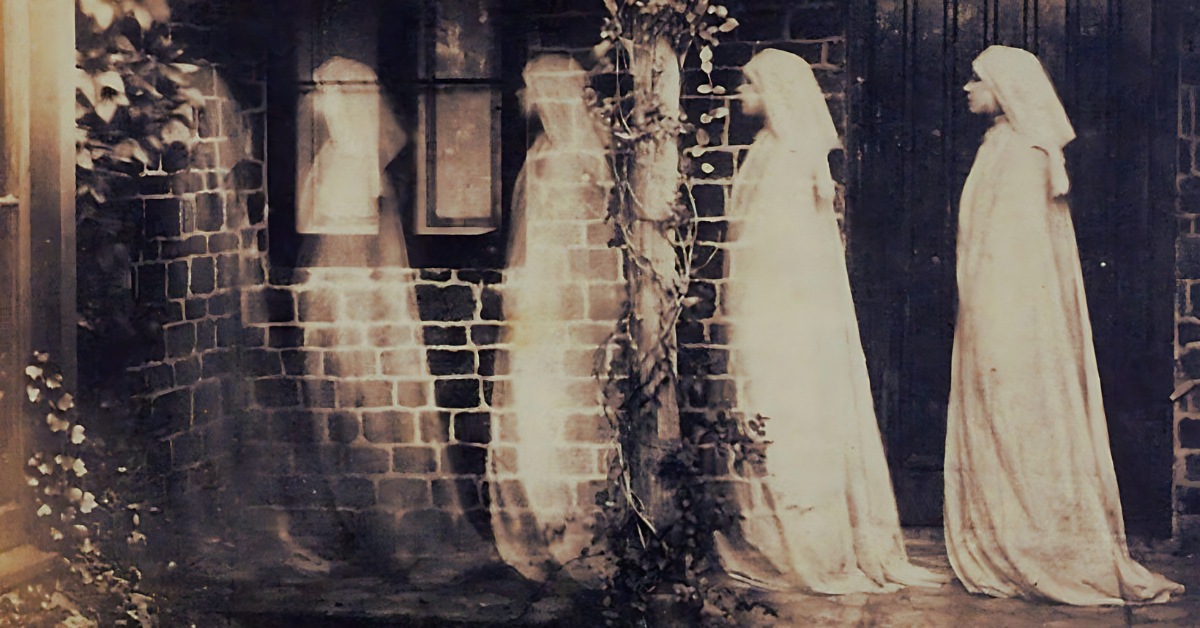If you have watched any of the Ghostbusters movies, then you probably have a pretty well formed image of what ectoplasm is: an oozy, sticky, disgusting substance that ghosts throw away at will. But there is more to it. The story of ectoplasm starts at the closing stages of the Victorian era, an epoch full of mediums, spirits and supernatural manifestations.
Or so they say.
What is ectoplasm?
The word “ectoplasm” is formed by two Greek words and literally means “something created (or produced) outside.” Originally, the term was coined by a certain Charles Robert Richet, a Nobel Prize laureate no less. It referred to a sort of substance that was generated by the mediums during their séances and oozed through the pores of their skin, their mouth, nostrils, and other body orifices.
However, Richet considered ectoplasm to have nothing to do with spirits. He believed in something called “the sixth sense” instead, some sort of extrasensory perception that captured a specific type of vibrations.
What does ectoplasm look like?
According to Richet’s description:
“In the early stages, there are always white veils and milky patches, and the faces, fingers, and drawings are formed little by little in the midst of this kind of gelatinous paste that resembles moist and sticky muslin.”
Charles Robert Richet
It did not stand still, but rather, it moved. Some considered that light could damage it, while others thought that touching it would harm the medium. There were some who thought it was odorless, and some that considered it expelled a very strong and pungent smell. Others say that it smelt like ozone. In many instances, the ectoplasm took the shape of the deceased person the medium had contact with (or at least their face).
According to Materializations by G. C. Barnard:
“The ectoplasm is very variable in appearance, being sometimes vaporous, sometimes a plastic paste, sometimes a bundle of fine threads, or a membrane with swellings or fringes, or a fine fabric-like tissue. It may be white (the most frequently observed color, probably because it is naturally the most visible), grey, or black in color, and it may even be luminous as if phosphorescent. Its visibility may wax or wane, and to the touch, it may feel soft, elastic, fibrous, or hard. It has the power of self-locomotion and moves generally with a slow reptilian movement, though it is capable of moving with extreme rapidity. It is capable of both evolution and involution and is thus a living substance. It is extremely doubtful whether it ever, even in its most perfect formations, actually loses contact with the medium and pursues an independent life, even momentarily, though such a supposition must be borne in mind as being a possibility.”
G. C. Barnard
In Scheele’s Green Ghosts, I make extensive use of ectoplasm to describe the nature of spirits. I treat it as a physical substance, and as such, it can be captured and stored or even bought and sold. Vaporous at first, ectoplasm can also be solidified by adding some sort of thickening powder (which resembles yeast) to be stored in jars. For the characters of The Lundenwich Society, ectoplasm is a substance not devoid of agency and intellect, and it is not quite clear yet if it is just something that the soul produces —or exudes— or part of the soul itself, with I think may create quite interesting moral dilemmas.
Ghosts do not necessarily require the presence of a medium to manifest themselves. They can also create their own ectoplasm from their surroundings (perhaps from the humidity in the air, as Thomas Blackpole guesses during the Phantom Carriage case) to become translucent or even solid. That way, they can be noticed and seen even in front of those who do not have “the gift.”
Ectoplasm today
When The Society for Psychical Research was created in 1882, the number of ectoplasmic manifestations started to decrease rather dramatically, and a high number of mediums were prosecuted for fraud. Harry Houdini also helped expose many fraudsters during his time. Some of them were actually using techniques that the great Houdini knew quite well. They ate and then regurgitated pieces of cloth or paper in a similar way that Houdini swallowed and subsequently caused keys, needles, or other small items. At the end, Houdini claimed that:
"Nothing has crossed my path to make me think that the Great Almighty will allow emanations from the human body of such horrible, revolting, vicious shapes, which like 'genie from the bronze bottle' ring bells, move handkerchiefs, wobble tables and do other flapdoodle stunts."For spiritualists and ghost hunters equally, the existence of such substance would have been really convenient, as then there will be proof for the unexplainable phenomena, and it could be analyzed in a laboratory and produce results under scientific scrutiny. But somehow, and despite very sound photographic evidence of the sorts you can see in this article, not many ectoplasm samples had been preserved throughout the years.
Do you want to do your own homemade ectoplasm?
According to Rosemary Guiley (Encyclopedia of Mystical and Paranormal Experience, 1991, p. 178), there are two common recipes that were used by false mediums and fraudsters during the late 19th Century and the beginnings of the 20th to create fake ectoplasm.
The first one requires soap, gelatin, and egg whites.
The second one is only toothpaste and peroxide.
The photographs you see here were faked using old clothes, blankets, or cheesecloth, and face photographs taken from newspapers or recreated with paper-mâché. All these ingredients are commonplace in any household, so why don’t you try to create your own ectoplasm at home?
